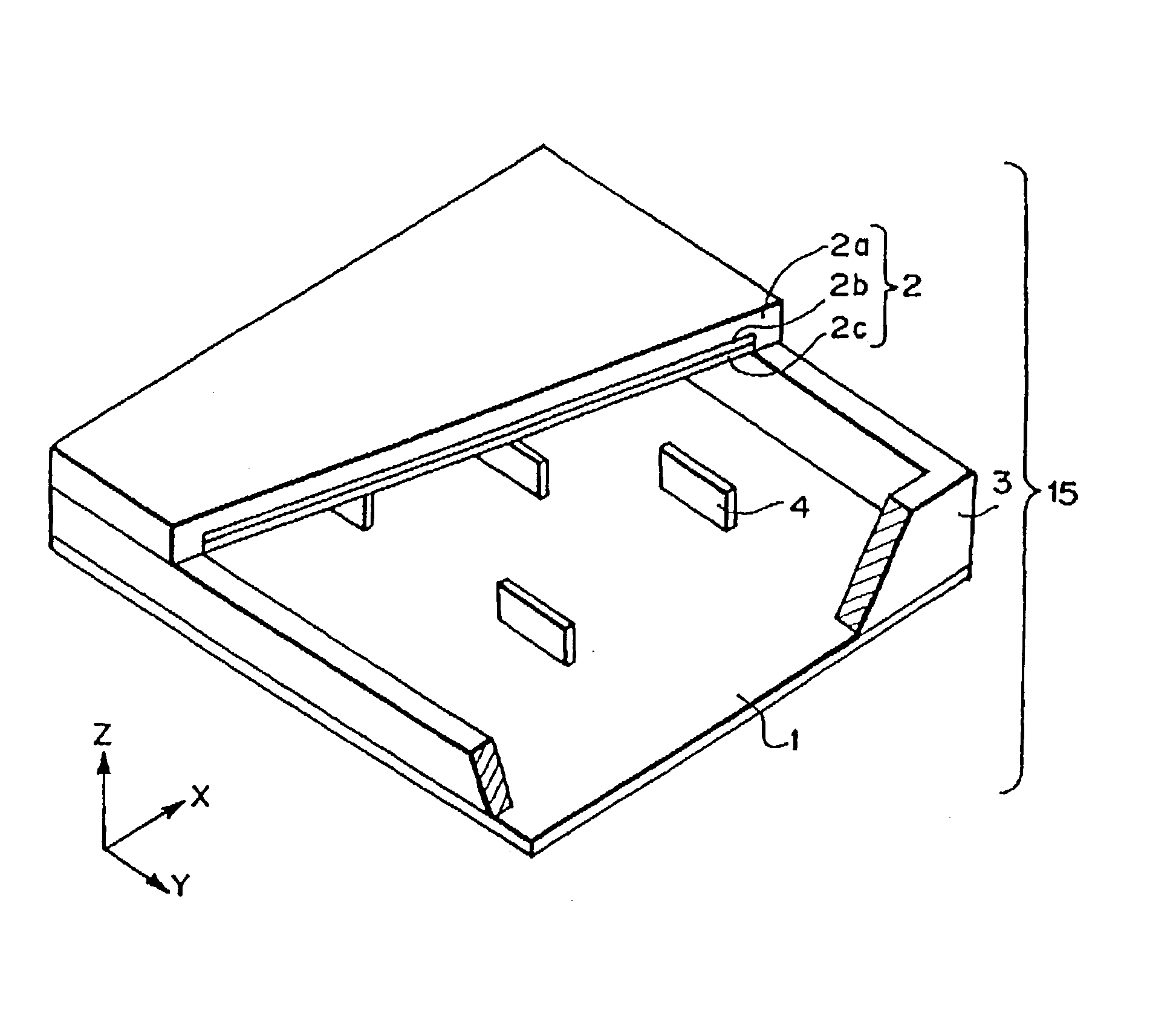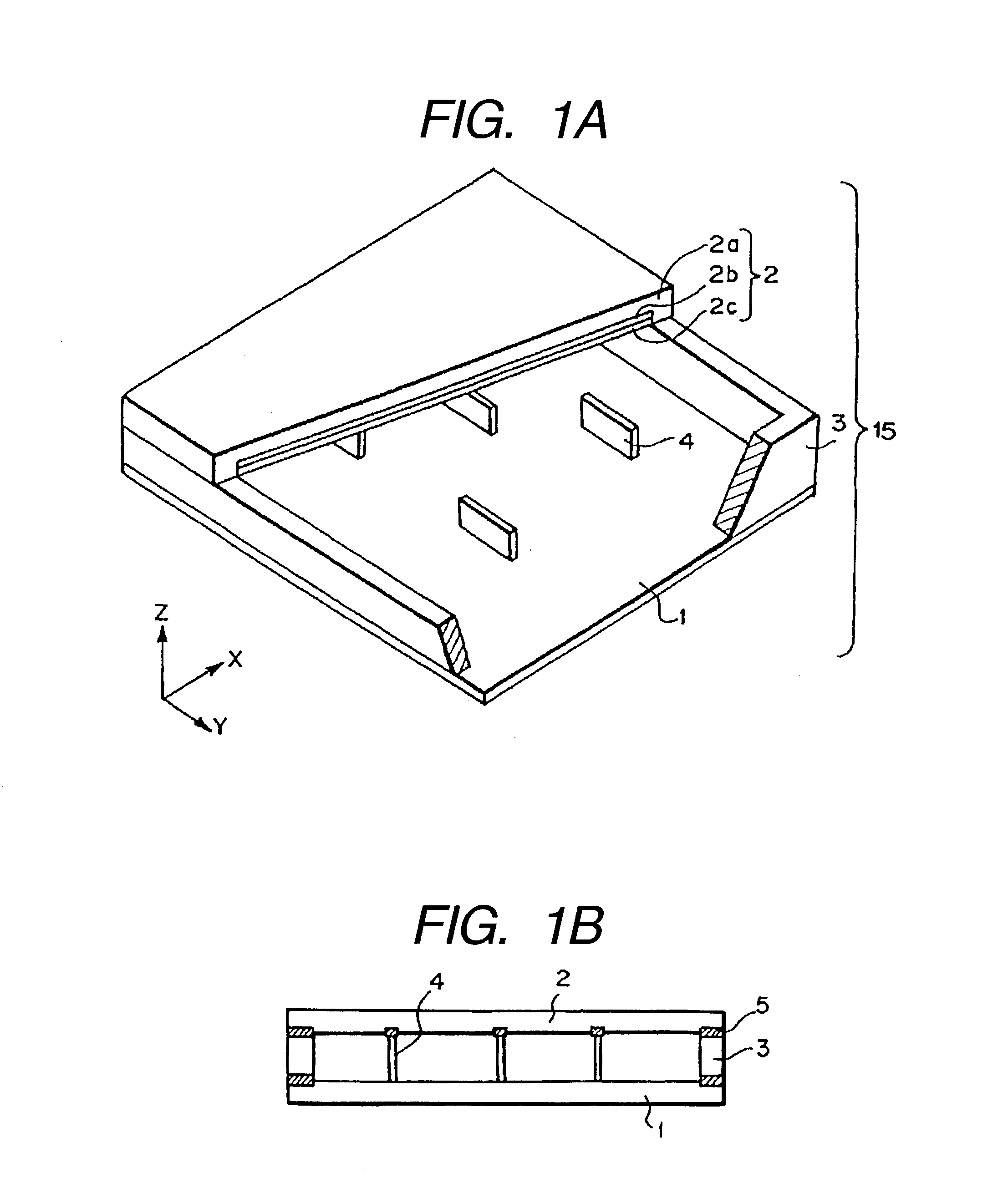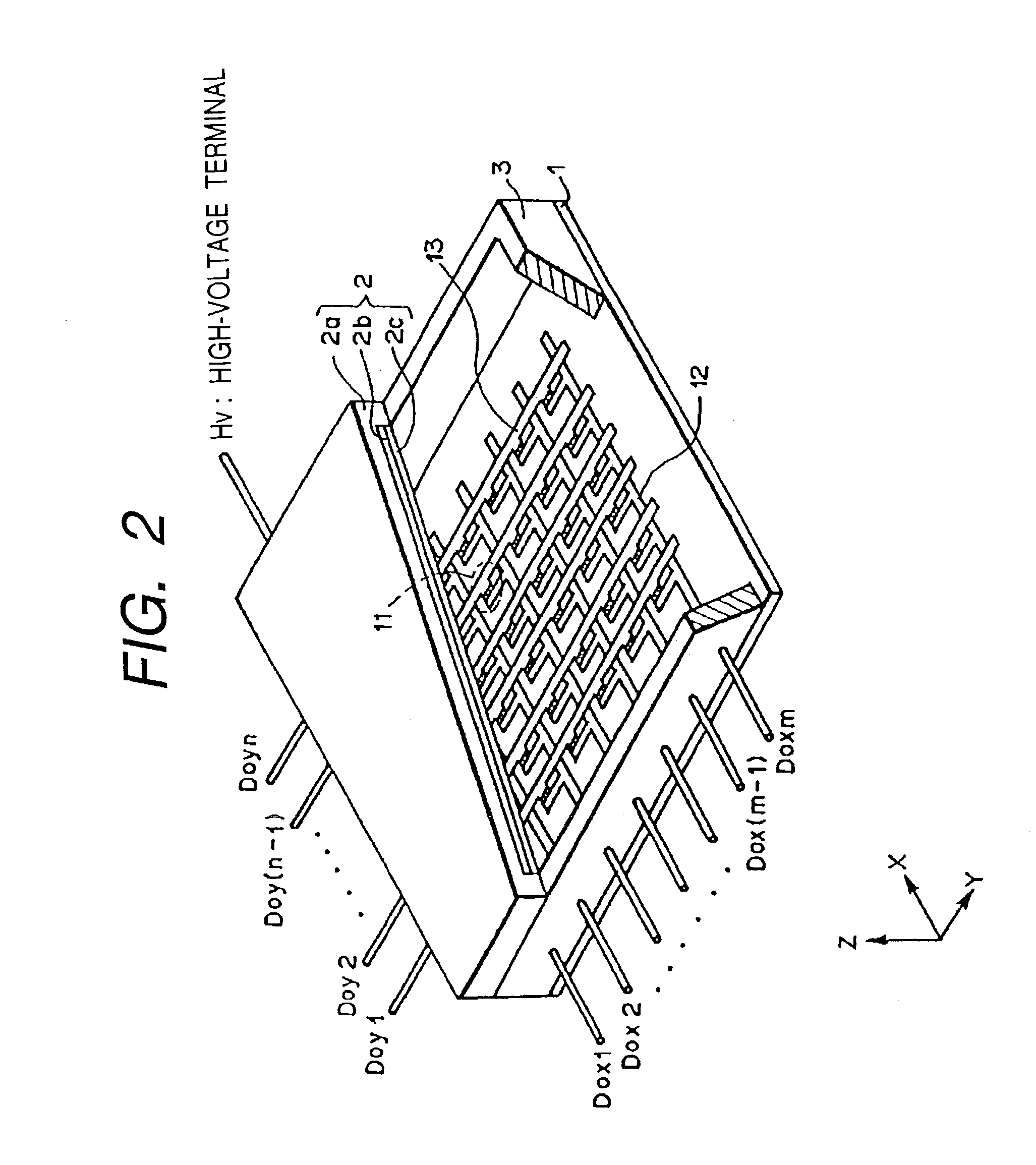Image display apparatus, disassembly processing method therefor, and component recovery method
a technology of image display and disassembly processing, applied in the direction of identification means, glass recycling, instruments, etc., can solve the problems of insufficient drainage facilities on sites, insufficient capacity of disposal sites, and inability to discharge hazardous substances
- Summary
- Abstract
- Description
- Claims
- Application Information
AI Technical Summary
Benefits of technology
Problems solved by technology
Method used
Image
Examples
example 1-1
[0258] A surface-conduction type electron source display (SED) of matrix driving scheme as shown in FIG. 2 was disassembled. This SED has a panel structure containing spacers as shown in FIG. 1.
[0259] In accordance with the flow chart of disassembly processing for an FPD device in FIG. 4, the SED was extracted from the housing of the SED device, and accessory wiring lines and terminals were removed. Then, the vacuum in the SED was canceled, and the exhaust pipe was detached. The exhaust pipe was processed and reused as lead-containing glass.
[0260] The SED was image-sensed with a video camera, and its image was captured by an image processing apparatus. A region of the image where frit glass was applied can be recognized as a darker region than the remaining portions. The image was binarized to measure the area of the region where frit glass was applied.
[0261] Disassembly pre-processing steps (1) to (5) were executed. The flat panel display was removed from the housing of the flat pa...
example 1-2
[0270] A surface-conduction type electron source display (SED) of matrix driving scheme as shown in FIG. 2 was disassembled. Steps up to the step of setting the cutting lines A-A, A'-A', B-B, and B'-B' are the same as in Example 1. The SED was scratched with a hard metal roller along the SED cutting lines. Subsequently, the scratched portions were sequentially heated with a gas burner in which oxygen was added to city gas. As a result, the glass was cut along the cutting lines, and the SED was divided into a frame portion 3, face plate 2, and rear plate 1. The subsequent steps were the same as in Example 1-1.
[0271] Since Example 1-2 does not use any grinding solution, members can be easily recovered and reused.
embodiment 2
[0272] [Embodiment 2]
[0273] Embodiment 2 of the present invention will be explained in detail below with reference to the accompanying drawings.
[0274] FIG. 5 is a flow chart showing an FPD disassembly processing method according to this embodiment of the present invention. This embodiment will exemplify disassembly processing for an FPD having spacers, as shown in FIG. 1.
[0275] In FIG. 1, reference numeral 1 denotes a rear plate; 2, a face plate; 3, a frame; and 4, spacers. Lead-containing frit glass 5 is used at each joint portion shown in black in FIGS. 1A, 1B, and 2. The spacers 4 are bonded to either one of the face plate 2 and rear plate 1 or both of them. In this embodiment, the spacers 4 are bonded to only the face plate 1.
[0276] Examples of the materials of the rear plate 1, face plate 2, and frame 3 are silica glass, glass containing a small amount of impurity such as Na, soda-lime glass, and glass prepared by depositing SiO.sub.2 on soda-lime glass by, e.g., sputtering. On...
PUM
| Property | Measurement | Unit |
|---|---|---|
| thickness | aaaaa | aaaaa |
| softening temperatures | aaaaa | aaaaa |
| melting point | aaaaa | aaaaa |
Abstract
Description
Claims
Application Information
 Login to View More
Login to View More - R&D
- Intellectual Property
- Life Sciences
- Materials
- Tech Scout
- Unparalleled Data Quality
- Higher Quality Content
- 60% Fewer Hallucinations
Browse by: Latest US Patents, China's latest patents, Technical Efficacy Thesaurus, Application Domain, Technology Topic, Popular Technical Reports.
© 2025 PatSnap. All rights reserved.Legal|Privacy policy|Modern Slavery Act Transparency Statement|Sitemap|About US| Contact US: help@patsnap.com



